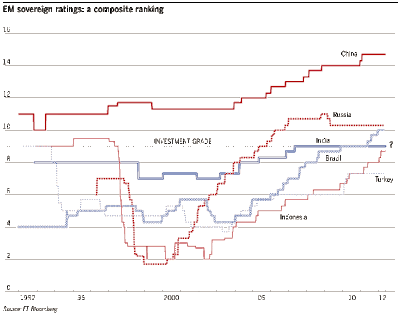Boston Review has an excellent debate about Michael Sandel's new book. As with all issues involving morality, there can be little agreement on the issues under debate. Prof Sandel's argument is that market motives have the potential to corrupt all participants in a transaction and thereby limit (or crowd-out) the role of morality in them. He therefore advocates that certain things like friendship, wedding toasts, gifts, school admissions, and organs for
transplant that should not be commercialized.
Debra Satz makes the important point by arguing that, instead of corruption, the fundamental concern with market is that it is agnostic to fairness in any transaction. She therefore traces the limits to market in its inherent nature to exclude a large proportion of the population from accessing certain goods and services. In terms of economics, this is called inequality. She illustrates this with the example of kidney markets,
Let's take two examples of mainstream debates on inequality and healthcare where the morality goalposts have undergone important changes due to the suffusion of market values. As inequality widens, there is mounting evidence that it has significant distortionary and destabilizing effects on the market's allocative efficiency. But conservatives invoke the principles of free-markets (income distribution is a reflection of inherent merit and hardwork) and oppose any attempt to remedy the situation. The result is an environment where taxation and welfare support are seen as undesirable, despite the co-existence of extreme concentration of wealth with severe deprivation and poverty.
As technological advances and increasing life expectancies drive healthcare costs upwards and fiscally constrained governments are forced to pare down healthcare expenditures, there is an intense debate raging about rationing healthcare. Questions involving what should constitute the basic package of healthcare services, nature of terminal care, subsidizing health coverage for the indigent, and so on, which involve important issues of collective morality, are increasingly being debated and decided based on market principles.
In both these cases, a market-based system of making decisions, which overlooks the principles of morality and human values, may have contributed to making many of us indifferent to severe deprivation or letting people suffer and even die for lack of access to the best available health care. But do we blame markets for this slip down the morality scales or is it an inevitable accompaniment of development and progress itself?
Debra Satz makes the important point by arguing that, instead of corruption, the fundamental concern with market is that it is agnostic to fairness in any transaction. She therefore traces the limits to market in its inherent nature to exclude a large proportion of the population from accessing certain goods and services. In terms of economics, this is called inequality. She illustrates this with the example of kidney markets,
Recently the New York Times reported that 60 people were linked in the longest chain of kidney transplants ever constructed. What is the difference between an ordinary market and this trading system in which people barter organs on behalf of loved ones? The morally salient difference is that, in the kidney exchange system, people could not use money to get access to an organ: the standing of rich and poor were thereby equalized. That people respond very differently to kidney chains and kidney markets suggests that there is an egalitarian intuition behind the prohibition on organ trading, not a view about the meaning of body parts.My own belief is that the debate on which things/services can be transacted in the market and which should be regulated by social norms will never have a conclusion which does not leave a significant minority dissatisfied. If its implications were confined purely to the personal realm, it would have been appropriate to leave the debate to rage on. But in a world where market norms have invaded most of our lives, there is a compelling case to the argument that the application of such norms to certain transactions can have socially destabilizing effects.
Let's take two examples of mainstream debates on inequality and healthcare where the morality goalposts have undergone important changes due to the suffusion of market values. As inequality widens, there is mounting evidence that it has significant distortionary and destabilizing effects on the market's allocative efficiency. But conservatives invoke the principles of free-markets (income distribution is a reflection of inherent merit and hardwork) and oppose any attempt to remedy the situation. The result is an environment where taxation and welfare support are seen as undesirable, despite the co-existence of extreme concentration of wealth with severe deprivation and poverty.
As technological advances and increasing life expectancies drive healthcare costs upwards and fiscally constrained governments are forced to pare down healthcare expenditures, there is an intense debate raging about rationing healthcare. Questions involving what should constitute the basic package of healthcare services, nature of terminal care, subsidizing health coverage for the indigent, and so on, which involve important issues of collective morality, are increasingly being debated and decided based on market principles.
In both these cases, a market-based system of making decisions, which overlooks the principles of morality and human values, may have contributed to making many of us indifferent to severe deprivation or letting people suffer and even die for lack of access to the best available health care. But do we blame markets for this slip down the morality scales or is it an inevitable accompaniment of development and progress itself?






















